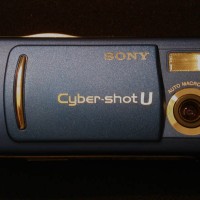Ok, if you’ve been following my blog, you’ll know the story – I was just cruising the malls when I ran into a Sony Exhibit and just couldn’t resist buying a Sony DSC-U20 digital camera. Its cuteness appeal, lower price, and now with a “free case & gift” was just too much for theVooner. After several weeks of use, I have had time to finally assess the camera.
Form
Let’s first talk about the appeal of the U20. It’s small – really small. That combined with the fact that it is amazingly light is a major plus. The U20 comes in a very small box-like shape, like a pack of gum. Although it lacks in design compared to the cool “card” idea of the Casio Exilim, I still like the way the U20 is made. Some have argued that the box shape of the U20 is relatively ugly because unlike the Exilim, for example, it is too fat and not small enough. I on the other hand disagree. I think the U20 is very well balanced and has a good shape. I compare it to a small mobile phone and I don’t think it takes up very much room in a pocket or hung around your neck.
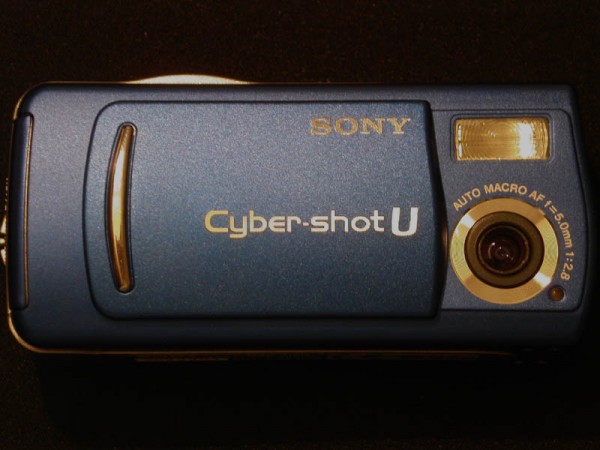
Sony Cybershot DSC-U20 Digital Camera picture 4
In comparison for example, I was playing with the Exilim the other day. If you lay it straight up, it easily falls over. If you lie the Exilim flat, you either have to put the lens or the screen on the table, neither of which is ideal. The U20 is the right size and shape to just leave sitting on a table – it’s solid and stable.
I especially like the metallic outer housing. The big bonus is of course that you get to pick from a number of different colors including a few new ones like orange and pink. But at the end of the day, I chose the blue casing because it simply looked the best.
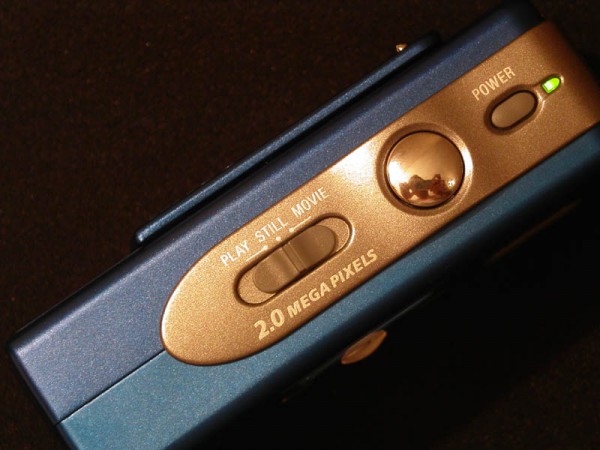
Sony Cybershot DSC-U20 Digital Camera picture 3
A sliding cover that slides open to turn on/off the camera protects the lens. I like this design as it protects the lens while still having a very easy way of turning on/off the camera. Remember that I had problems with the Minolta Dimage F100 because it just turned on way too easily, a lot of times when I didn’t want it to.
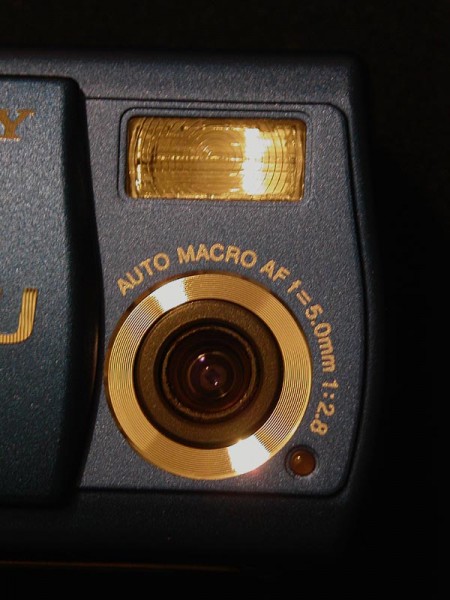
Sony Cybershot DSC-U20 Digital Camera picture 7
The battery and Memory Stick are housed in a door on the side of the camera. The back of the camera has a small LCD screen. Overall, the U20 is a fairly simplistic digital camera design, but I still like it for its small size and its overall feel.
Function
Before we get into the meat of the digital camera, i.e. what the pictures are like, let me dive into the only significant downside of the U20 that I see. The U20 comes with an exceptionally small LCD screen. While on the one hand, the small LCD screen is both cute and probably saves a lot on battery, it is on the other hand still way to small to make out any visual approximations. All pictures are discernable through the screen, it’s just extremely hard to make out details. It can be hard to tell specific details of any photo (like lighting, brightness, sharpness, etc.)
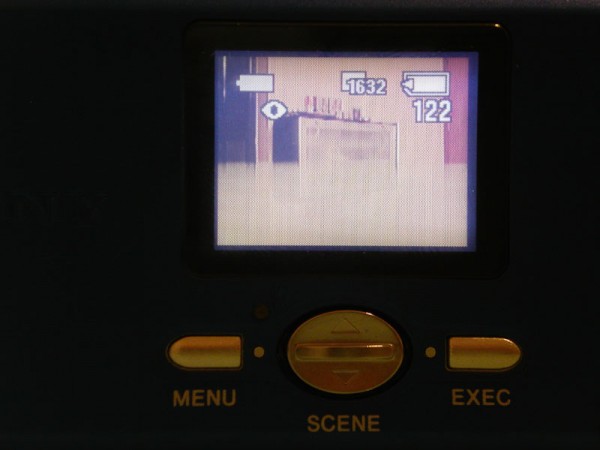
Sony Cybershot DSC-U20 Digital Camera picture 2
Having said that though, it wasn’t difficult for me to see which pictures were clearly blur and hence needed to be deleted and taken again. In truth, I had the exact same issue with the Minolta Dimage F100 that I may not have pointed out in the review. On a few occasions, pictures that came out extremely clear on the LCD screen did not come out clear at all when later downloaded.
I was worried that I would have the same problem with the U20 given that the size of the screen was even smaller so it was going to be much more difficult to see if the pictures came out or not. As a result, I resorted to the old method of taking multiple photos of the same images just to make sure that the pictures turned out. You can set the camera to the “burst” mode that takes 5 instantaneous shots of any scene. That should make sure you take at least one decent photo and is a neat function for parties.
Luckily, this is where the camera performed well beyond its expectations. First, as the U20 is only a 2 megapixel camera (resolution of 1632×1224), you get a lot of mileage for your memory sticks. Using a 64MB MS, you can get well over 120 images on it. As a result, you don’t really have to worry about running out of memory with the U20. A 128MB MS would be more than adequate for many days of shooting without even downloading the images.
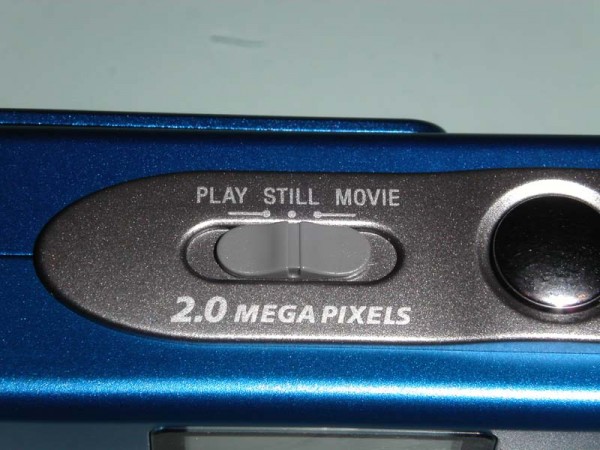
Sony Cybershot DSC-U20 Digital Camera picture 1
In addition, all of the images that I took over the past few weeks have actually all come out really well. The quality of the images, sharpness, strength of the flash, etc. all performed much better than I expected. Yes, this isn’t a 4MP digital camera, but given its size and shape, I was more than pleasantly surprised. Hence, the above problem didn’t turn out to be a major issue.
Remember that the U20 is a “fun” camera. It’s not really meant for taking detailed family portraits or for serious photography but more for taking along to a party or golf outing. With that in mind, I was more than happy and content with the U20’s performance. In daylight, the camera performed especially well with very solid images. Indoor pictures also came out very well. The flash was strong enough to handle a normal room light. I don’t know how well it will work in a very dark room but it should be adequate if you’re just taking pictures of people and not necessarily places.
The ability for the U20 to take video images is also a major plus. Though not a function I readily use, the U20 is great because it can take video clips up to whatever memory is left. Other cameras often restrict you to certain time periods for videos (like 45 seconds or something), but the U20 let’s you take as long as you have memory space. A 128MB MS can store up to 90mins of video. It’s not great quality, but kinda fun – I should learn to use it more.
The U20 uses two ‘AAA’ batteries. It comes with rechargeable ‘AAA’ batteries and I recommend buying an extra set. However, I took over 70 pictures the last time and the battery meter didn’t even move down to the half-bar. With such a small screen, battery life is going to be really good. The ease of ‘AAA’ for its battery life are a definite key selling point, especially relative to other mini-digital cameras.
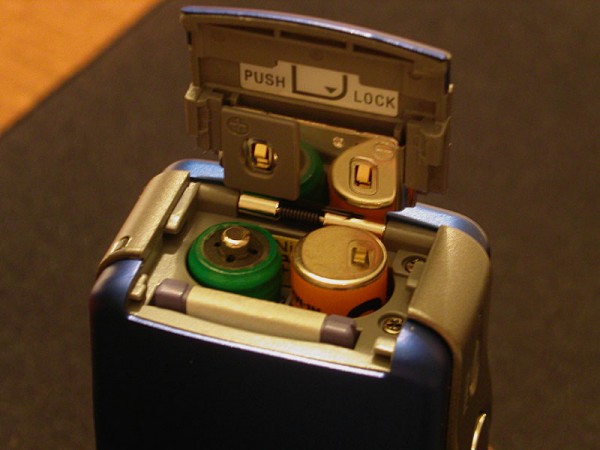
Sony Cybershot DSC-U20 Digital Camera picture 5
The menus and controls are extremely easy to use and it’s easy to customize whatever setting you want. I haven’t used all the different modes, but I suspect if I learn to use it a bit better, I’ll be better able to manually take better pictures as well.
Factor
At the end of the day, the U20 has to be accepted for what it is: a super small, fun digital camera. There is always room for this kind of products in my opinion. The U20 can never take the place of good digital camera, the kind you would take on a long vacation. But the U20 is a good fun convenient camera. The kind you would take to a friend’s birthday party, a golf outing, or even a short, quick road trip. So if you accept the U20 as a “second” camera, it’s a pretty great digital camera. While I also like other models like the Casio Exilim, the Minolta Dimage X and the new Nikon Coolpix SQ, I much prefer being able to use two ‘AAA’ batteries. As a result, in this sub-category of digital cameras, I think the U20 is the current ESSENTIAL option.
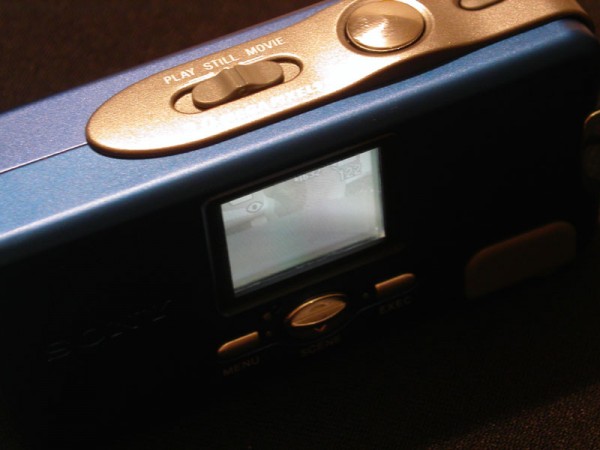
Sony Cybershot DSC-U20 Digital Camera picture 6
